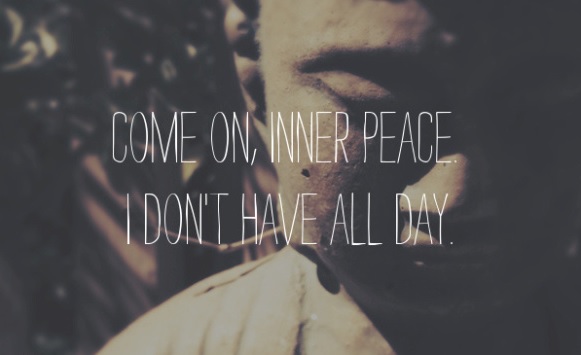What Mindfulness Is And What It Is Not…
Amongst recent fads in fitness (waist trainers, vibration belts, CrossFit), diet (gluten-free, Paleo, juicing), and self-help (positive thinking, adult colouring books, gratitude), mindfulness meditation has rapidly risen to awareness.
Despite its increasing popularity, however, very few people can clearly define and explain what mindfulness actually is. Is mindfulness simply another fad? Does it benefit everybody? Does it have any side effects? And if mindfulness is more than just a fad, are we using it correctly? I am doing a PhD in mindfulness and still cannot fully answer these questions!
What is Mindfulness?
In research, mindfulness is generally defined as the practice of “paying attention on purpose, in the present moment, and non-judgementally” (Jon Kabat-Zinn). This definition, however, means relatively little to most of us.
Beyond that, a true understanding of mindfulness is difficult, if not impossible, to gain simply by reading about it. But even substantial mindfulness practice without some reading around the topic may at best limit the understanding of mindfulness as a concept, and at worst cause potential side effects from the practice.
While everyone’s mindfulness and meditation journey is unique, it is important to have some basic understanding of what mindfulness is and what it is not. Below I list some misconceptions often associated with mindfulness, based on my own practice and experience.
✗ Mindfulness is not a quick fix. Feeling stressed, depressed or anxious? We all do at some point in our lives. So you decide to give mindfulness a go, but find yourself feeling frustrated, disappointed, or even more depressed than before. Why? Without some understanding of what mindfulness is about, we may have certain expectations about the results it will achieve, and end up discouraged when our expectations are not met. If we expect to feel better after a short meditation practice, we end up disappointed when that doesn’t happen. If we expect to feel more relaxed and positive, we end up disappointed if we find that negative thoughts keep coming in. In fact, if we expect any result from our practice, we are actually not practicing mindfully at all, and are therefore not likely to gain the full benefits of our mindfulness practice.
✓ Mindfulness is a journey. Every journey must be undertaken personally, and requires time, commitment and maintenance. It is equally, if not more important, to meditate and practice mindfulness when you are not feeling stressed or depressed. An anxious mind is likely to be less mindful, but practicing mindfulness when your mind is calm will make it easier to practice it when your mind is not.
✗ Mindfulness is not a “one-size fits all” approach. Has someone told you that you should try meditation? Did they describe their own process down to their posture and the placement of their hands? Did they describe their own understanding of mindfulness? Did they recommend how long you should meditate for? Great! But this might not work for you. Maybe your body does not allow you to sit in that position. Maybe you do not have the 30 minutes in the morning to meditate, you only have 10. Maybe you are not ready to attempt unguided meditation. What works for one person will not always work for another.
✓ Mindfulness is a personal practice. You need to be able to adjust to your own physical and mental restraints, your other commitments, the time available to you, and the space that you are in. Most importantly, you need to remember that your experience of mindfulness practice may differ from others’ experiences of it. This should not discourage you, but simply remind you that your journey is your own, and you should not strive to be anything or anyone that you are not. Mindfulness practice requires an open, flexible, and patient mind.
✗ Mindfulness is not a way to empty the mind. Do you find yourself confused about the differences between mindfulness, meditation, relaxation, and positive thinking? You are not alone! There are many different meditation, relaxation, and positive thinking techniques out there, which are beyond the scope of this blog. Mindfulness, however, is not a technique, nor is it limited only to meditation or relaxation practice. Mindfulness practice does not require you to empty your mind, nor does it ask you to only allow good thoughts in.
✓ Mindfulness is a skill. The mind will wander, and the thoughts that enter it are more often negative than positive. This is what the mind does! Clearing it of all thoughts is impossible. Mindfulness simply teaches us not to judge or dwell on our thoughts. It teaches us to accept the thoughts, sensations and emotions that come and go, and to bring our mind back to the present moment when we notice that it has wandered. It teaches us to be relaxed, yet alert and present at the same time. And like most skills, mindfulness requires consistent and regular practice to develop.
Today, mindfulness is widely researched, promoted, and adopted in various settings, populations, and situations. A lot of work still needs to be done to investigate the full potential of mindfulness and meditation practice, as well as to explain what mindfulness really is, so that the misconceptions surrounding it can be cleared.
What mindfulness is not, however, is a fad. It has been around for a long time, and will stick around for a long time to come.
